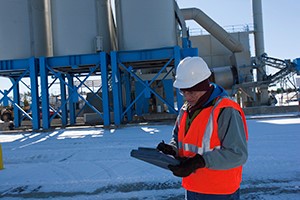Prevent Cold Weather-Related Injuries

It’s already been cold in many parts of the country. Bundling up in hats, coats, and gloves is a smart practice as you head off to work, but what about working in cold temperatures? What are some ways to ward off common winter injuries and illnesses?
Carbon Monoxide Poisoning
When thinking about cold weather injuries, not many would think about poisoning. Unfortunately, carbon monoxide poisoning is a leading cause of death, especially during the winter months. Faulty gas furnaces, automobiles, and generators are common sources of carbon monoxide poisoning. These injuries are entirely preventable by simply ensuring proper ventilation is in place.
Avoid Over-Exposure to Cold
Hypothermia and frostbite are perhaps the most common cold weather-related injuries.
Hypothermia occurs when the body loses more heat than it can generate, and body temperature falls below 95ºF. It’s commonly caused by extended exposure to the cold without the proper protective clothing, wearing wet clothes in windy or cold weather, or heavy exertion during cold weather while not drinking enough fluids. Symptoms of hypothermia include drowsiness, confusion, loss of coordination, uncontrollable shivering, and slowed breathing or heart rate.
Frostbite usually occurs in exposed areas or extremities, which can be numbed because of slowed blood flow. When frostbite begins, you’ll lose feeling in the affected area. The frozen tissues will appear whitish or pale. If you suspect frostbite, hold the frostbitten area closely against warm skin to return blood flow and warmth to that area.
Proper apparel for cold temperatures is essential to keep yourself and your workers safe.
- Dressing in layers works best. Mittens or gloves; multiple layers of windproof, water-resistant clothing; two pair of socks (cotton next to skin, then wool); a scarf; and hat or hard hat liner that covers the ears will help protect against the dangerous winter weather
- Facemasks will not only conserve heat loss but also help prevent frostbite on the vulnerable tip of the nose
In extremely cold temperatures, especially with high winds, workers should not be outside in wet clothing. They should have a complete change of clothing available in case they sweat excessively or their clothes get wet.
Aside from being prepared, it’s also helpful to use the buddy system. Hypothermia, frostbite, and other cold-related illnesses affect people in different ways because a person’s body chemistry and body type determine their tolerance to cold. Co-workers should alert each other to danger signs that they observe like shivering, slurred speech, and confusion.


